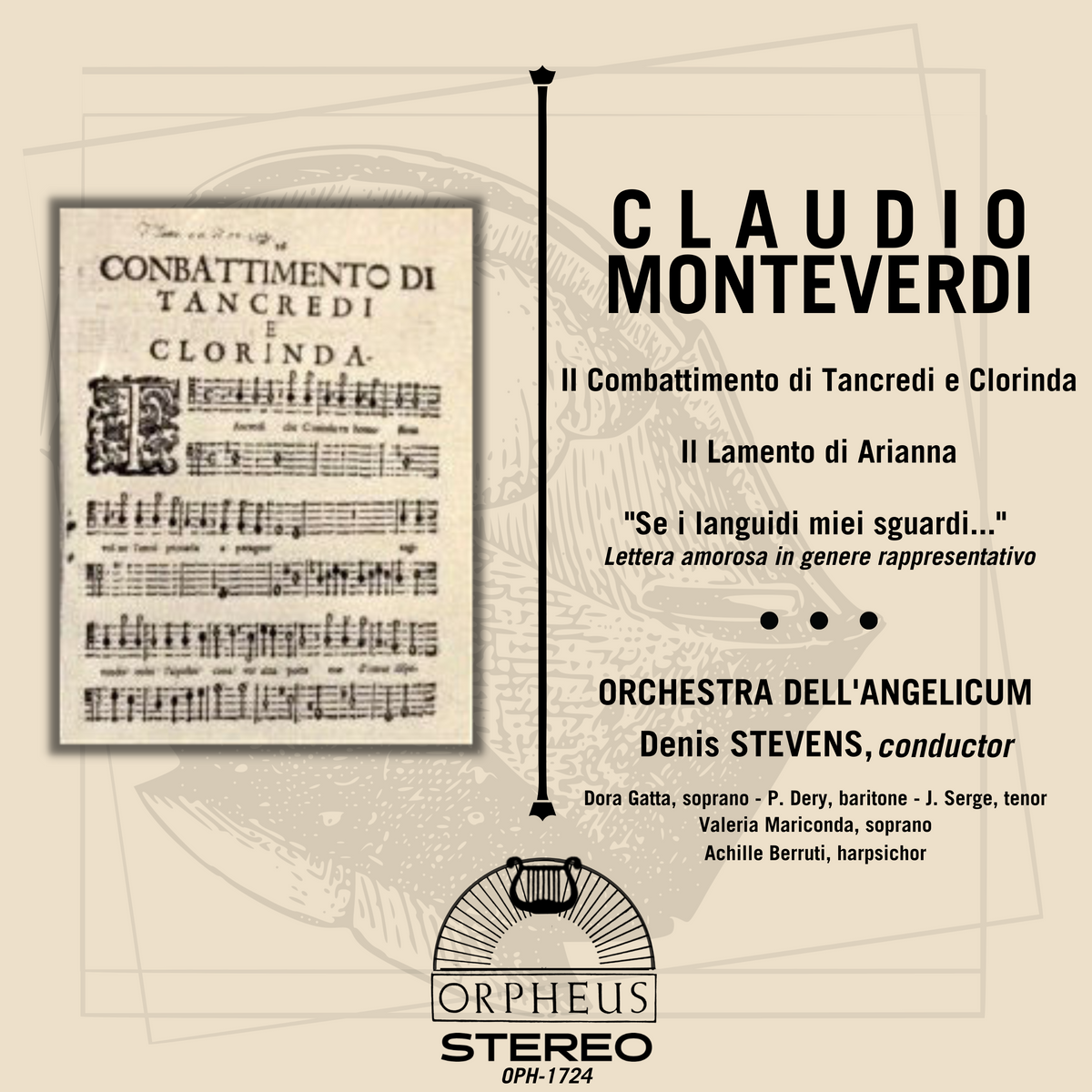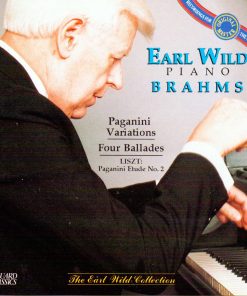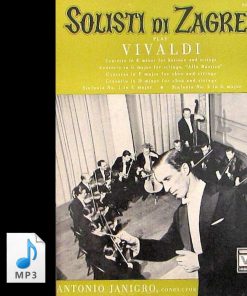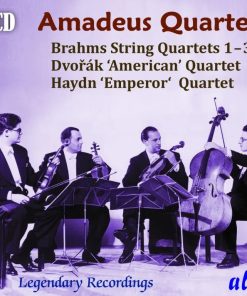MONTEVERDI: ll Combattimento di Tancredi e Clorinda, SV 153; Lamento d’Arianna, SV 22; III. Se i languidi miei sguardi, SV 141 – Orchestra dell’Angelicum, Denis Stevens (DIGITAL DOWNLOAD) ORPHEUS
$ 5,99 $ 3,59
THIS DOWNLOAD INCLUDES A BOOKLET WITH NOTES, TEXTS AND TRANSLATIONS

ll Combattimento di Tancredi e Clorinda (The Combat of Tancredi and Clorinda), SV 153
Clorinde (soprano): Dora Gatta
Testo (tenor): John Serge
Tancredi (baritone): P. Dery
Lamento d’Arianna, SV 22
Se i languidi miei sguardi, SV 141 – Lettera amorosa in genere rapresentativo
Valeria Mariconda, soprano
Achille Berruti, harpsichord
Orchestra Dell’Angelicum
Denis Stevens, conductor
NOTES
Il Combattimento di Tancredi e Clorinda represents one of the highest moments in Monteverdi’s works, both from the standpoint of style and composition and that of pure artistry. The work, taken from the Eighth Book of Monteverdi Madrigals (Madrigali Guerrieri et Amorosi Con alcuni opuscoli in genere rappresentativo che saranno per brevi Episodi fra i canti senza gesto. Libro Ottavo. In Venice in the care of Alessandro Vincenti. MDCXXXVIII), was performed for the first time in the palace of the Venetian nobleman, Girolamo Mocenigo, in 1624 “during Carnival as a vigil entertainment, in the presence of all the nobility, whose sense of compassion was so touched, that they were almost moved to tears; and the applause granted the work was such as has rarely been seen or heard.” The preceding is how Monteverdi himself described the origin of the composition in the preface to his eighth book of madrigals.
Monteverdi with Combattimento intended to demonstrate the yet untried possibilities of his “concitato” style to express above all by rhythm, dynamic figures, and agitated speed-up (the division of semibreve into 16 semi-quavers portrayed the soul’s most extreme “emotions” i.e. anger and indignation” according to Monteverdi). Motivated by the premise that the final goal of good music was to stir the passions a fundamental element of Monteverdi’s poetics and the inspiration of his theory of the “Seconda Prattica” “and knowing that contrasts are the things which most greatly move our souls Monteverdi continues by saying we must take the cue from the divine Tasso who as a poet expresses with such propriety and naturalness in his orations those passions he seeks to describe and rediscover in his description of the battle of Tancredi with Clorinda, that I might have in myself these contrasting passions to set to music: War, Prayer and death…” Prayer and death, anger and pity: between these two extremes which are symbolically summed up in the memorable pages of the XII Canto (52-68 Octaves), the most secret and intimate lyrical core of the Gerusalemme Liberata are carried even further in Monteverdi’s Combattimento.
Firmly fixed on the foundation laid down by the illustrious Renaissance madrigalists and the new techniques of musical theater, these pieces give a lively portrayal of emotions united with the most daring novelties of Baroque musical techniques and taste: the recitative style, moulded to admirable dramatically interesting and realistic effects in the three-sided debate among the “historian and the two protagonists, the wealth of the new instrumentation used with a strong picturesque and allusive sense, and finally, the lifelike scenic effects on which Monteverdi himself left us rich details in his sparse but complete director’s notes, in the foreword of the 1638 edition of the work.
The Lettera amorosa was first published by Monteverdi in Concerto. Settimo libro de’ Madrigali a 1,2,3,4 & sei voci con altri generi de Canti di Canti di Claudio Monteverdi, Venice, 1619, B. Magni (printed by Gardano), and republished 4 years later together with the Lamento d’Arianna and the Partenza amorosa (Lamento d’Ariana Del Signor Clandio Monteverde et con due Lettere Amorose in genere rappresentativo), Venice 1623, B. Magni (printed by Gardano).
Based on a text by Claudio Achillini, as was recent revealed by Claudio Gallico (Monteverdi frequently adapted other’s texts to suit his own purposes), the literary work is placed in an ideal theatrical framework; it is no coincidence that in the 1619 edition, the work carried the title: “Lettera amorosa a voce sola in genere rapresentativo et si canta senza battuta.” However, as Gallico points out, the term “representative” or theatrical does not refer so much to the extrinsic situation described in the text (“an impatient cavalier, at the postponement of his marriage, writes to his beautiful betrothed”), as to the more intimate relationship between words and music the “modulations of sound which accompany the unraveling discourse, the precise structural coherence, the words which welcome and exalt in a rather intense way the meanings and feelings of the heart.”

1. ll Combattimento di Tancredi e Clorinda (The Combat of Tancredi and Clorinda), SV 153
Clorinde (soprano): Dora Gatta
Testo (tenor): John Serge
Tancredi (baritone): P. Dery
2. Lamento d’Arianna, SV 22
3. Se i languidi miei sguardi, SV 141 – Lettera amorosa in genere rapresentativo
Valeria Mariconda, soprano
Achille Berruti, harpsichord
Orchestra Dell’Angelicum
Denis Stevens, conductor
| CHOOSE YOUR DIGITAL DOWNLOAD FILE TYPE | MP3, FLAC, APPLE LOSSLESS |
|---|
Fast Shipping and Professional Packing
Due to our longstanding partnership with UPS FedEx DHL and other leading international carriers, we are able to provide a range of shipping options. Our warehouse staff are highly trained to pack your goods exactly according to the specifications that we supply. Your goods will undergo a thorough examination and will be safely packaged prior to being sent out. Everyday we deliver hundreds of packages to our customers from all over the world. This is an indication of our dedication to being the largest online retailer worldwide. Warehouses and distribution centers can be located in Europe as well as the USA.
Orders with more than 1 item are assigned processing periods for each item.
Before shipment, all ordered products will be thoroughly inspected. Today, most orders will be shipped within 48 hours. The estimated delivery time is between 3-7 days.
Returns
The stock is constantly changing. It's not entirely managed by us since we are involved with multiple parties such as the factory and our storage. The actual stock can fluctuate at any time. Please understand it may happen that your order will be out of stock when the order is placed.
Our policy is valid for 30 days. If you haven't received your product within 30 days, we're not able to issue either a return or exchange.
You are able to return a product if it is unused and in the same condition when you received it. It must also still remain in the original packaging.
Related products
Digital Music Downloads
HOLST: THE PLANETS SUITE; ST PAUL’S SUITE – HANDLEY, ROYAL PHILHARMONIC (Digital Download) ALTO
Digital Music Downloads
BEAUTIFUL MOZART – One Hour of Mozart’s Most Beautiful Melodies (DIGITAL DOWNLOAD) BACH GUILD
Digital Music Downloads
Digital Music Downloads
Digital Music Downloads
HAYDN: SYMPHONIES 99-104 – WOLDIKE, VIENNA STATE OPERA ORCHESTRA BACH GUILD
Digital Music Downloads
Digital Music Downloads
Digital Music Downloads
CHRISTMAS IN OXFORD – Magdalen College Choir & John Harper (Digital Download) ALTO
Digital Music Downloads
EARL WILD PLAYS BRAHMS & LISZT (DIGITAL DOWNLOAD) OMEGA VANGUARD
Digital Music Downloads
BEAUTIFUL FLUTE – An Hour of the Finest Flute Melodies (DIGITAL DOWNLOAD) BACH GUILD
Digital Music Downloads
I SOLISTI DI ZAGREB PLAYS VIVALDI (Digital Download) VANGUARD CLASSICS
Digital Music Downloads
Digital Music Downloads
Digital Music Downloads
A MEDIEVAL CHRISTMAS – PRO CANTIONE ANTIQUA (Digital Download) ALTO
Digital Music Downloads
Digital Music Downloads
Digital Music Downloads
17 JEWELS IN THE CROWN OF THE BAROQUE – CAMERATA OF ST. ANDREW (DIGITAL DOWNLOAD) VANGUARD CLASSICS
Digital Music Downloads
Digital Music Downloads
BRAHMS, DVORAK & HAYDN: QUARTETS – AMADEUS QUARTET (2 CDS + FREE MP3) ALTO
Digital Music Downloads
BRAHMS, DVORAK & HAYDN: QUARTETS – AMADEUS QUARTET (DIGITAL DOWNLOAD) ALTO
Digital Music Downloads
BEAUTIFUL HARP – One Hour of Glissando Beauty (DIGITAL DOWNLOAD) BACH GUILD
Digital Music Downloads
Digital Music Downloads
BEETHOVEN: 9 SYMPHONIES – Wyn Morris, London Symphony Orchestra (DIGITAL DOWNLOAD) MUSICAL CONCEPTS
Digital Music Downloads
Digital Music Downloads
Digital Music Downloads
BIG BACH SET, VOL. 3 (10 Hour Digital Download – MP3) BACH GUILD
Digital Music Downloads
Digital Music Downloads
GRETRY/GLUCK/RAMEAU/PURCELL: SUITES – Hartford Symphony Orchestra, Fritz Mahler VANGUARD CLASSICS
Digital Music Downloads
Digital Music Downloads
BEAUTIFUL GUITAR – An Hour of Gorgeous Guitar (DIGITAL DOWNLOAD) BACH GUILD









































